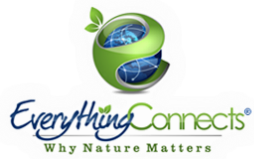Reduce Water Pollution
|
Navigation
|
Water is where life began and why life continues, but it is also the world's most threatened essential resource. In addition to the accelerating climatic-driven threat of drought, where water sources all over the world face the threat of potentially drying up as the warming climate accelerates, water is becoming increasingly polluted every year. Water pollution affects drinking water, rivers, lakes and oceans all over the world. This consequently harms human health, wildlife and the natural environment. According to the NIEHS, water pollution is any contamination of water with chemicals or other foreign substances, such as fertilizers and pesticides from agricultural runoff, sewage and food processing waste, lead, mercury and other heavy metals, chemical wastes from industrial discharges, and chemical contamination from hazardous waste sites, that are detrimental to human, plant or animal health. Polluted, unsafe water is the leading cause of sickness and death with half of the world's hospital beds filled with people suffering from water-related illnesses. You can help purify, conserve and protect water resources by following the many actions listed below. Learn more.
|
Why Cleaner Water?
"We have the ability to provide clean water for every man, woman and child on the Earth. What has been lacking is the collective will to accomplish this. What are we waiting for? This is the commitment we need to make to the world, now." ~Jean-Michel Cousteau |
|
Discover the EPA's 'Do's and Don'ts Around the House' to Reduce Polluted Water Runoff
|
|
U.S. Composting Council: Using Compost Can Reduce Water Pollution
Your browser does not support viewing this document. Click here to download the document.
“Five million people die unnecessarily each year because of illness related to lack of potable water. Half of them are children under the age of five. To bring it home, think about this: one child dies from lack of clean water every twelve seconds.” ~Thomas M. Kostigen |
|
|
|
"Water and sanitation problems have reached boiling point: children are dying unnecessarily at the rate of 20 jumbo jets crashing every single day."
~Ravi Narayanan
~Ravi Narayanan
|
|
|
|
"Clean water, the essence of life and a birthright for everyone, must become available to all people now." ~Jean-Michel Cousteau
|
Last Revised: 11/20/13
Commenting Rules |


